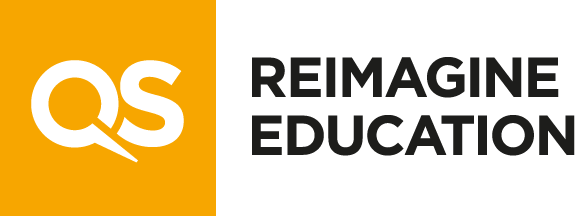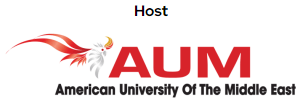Crafting A Winning Application: Insider Insights – Part 1(Approach)
What Happened Next: Snapplify
Crafting A Winning Application: What’s Unique?
Application Part 2: Competitor Comparison/What’s Unique?
In this five-part series, we delve into the best of our 7500 applications to provide you with all of the insight necessary to take you through the Reimagine Education Awards application process. In the first section, we provided some guidance on how to succeed in section one – telling us about your project approach. In this second instalment, we take you through how to successfully navigate Section 2, within which you’ll be asked to demonstrate an awareness of existing pedagogical approaches in your area (if you’re applying for the ‘Academic’ tracks) or competitor solutions (if you’re applying for the ‘Venture’ tracks) – and to explain what makes your own work unique.
Question One: How does your project replace, and/or improve existing pedagogical practice or theoretical approaches? Please outline what makes your project superior to similar or existing practice.
Whether in the arts, technology, or the sciences, all pioneers should have a keen knowledge of what precedes their own attempts to ‘make it new’. We believe that educational innovation is no different – and we want to reward our applicants for having done their due diligence. With dozens of Learning Management Systems, coding schools, language-learning apps, and virtual internship facilitators circling around, we want to see that you’ve taken the time to familiarise yourself with those who are doing, or have done, similar work in your field. Weaker applications tend to make grandiose claims about their uniqueness or pioneering nature, only to receive judge feedback that there are multiple similar schemes around – sometimes in the same Award Category!
So good answers to this question will begin by concisely and accurately summarising (a) the most important work that has been done to solve your educational problem (theoretical, practical, or both), (b) articulating the limitations or deficiencies in those approaches, then (c) explicitly stating those areas or facets of your work that counteract those limitations, or overcome those deficiencies.
A weaker answer to this question looks something like this:
The […] simulator is a high-fidelity simulator. Flexible and adaptable to different teaching and learning environments. It replaces traditional PBL creating an authentic interaction between the student and the simulated patient. Our recent experience of using it from a distance learning and assessment is unique.
Award judges noted that the project authors did not demonstrate a substantive awareness of either existing examples of simulations being used within educational settings, or of specific existing deficiencies in project-based learning (PBL) methods. The proposed improvemetns (‘more authentic’; ‘flexible and adaptable’; ‘high-fidelity’) struck the judges as generic – many applicants make similar claims – and were not obviously a response to well-evidenced limitations in existing delivery. Though we do not want our applicants to spend excessive amounts of time completing a Reimagine Education Application, this answer’s brevity makes it very difficult to achieve the desired substance.
Conversely, last year’s VR/AR Bronze Winner wrote:
VR enables new teaching forms that have not been possible—or impractical—before. For example, VR goes beyond what a field trip offers and provides access to multiple sites, far-flung places, and areas that might be unsafe for humans (such as close-up view of a milling machine). Synergetic approaches and blended learning, combining field visits, and the use of VR can also be implemented (e.g., we brought the students to one of the factories they had already visited virtually). Through its immersive aspect, VR helps the students relate to the course assignment and reduce its abstraction level. According to Chris Dede (“Immersive interfaces for engagement and learning.”, 2009, Science, p.66), “the ability to change one’s perspective or frame of reference is a powerful means of understanding a complex phenomenon.” FactoryVR enables unprecedented possibilities for field immersion into the complex factory world. Using VR guided by an assignment, students can independently explore production sites at their own pace, place, and initiative, and learn to evaluate what they see critically. One student noted in a focus group discussion, “[…] since you have to look around, you start thinking… hey, so what am I actually looking at, or what should I be looking at?”
Here, the authors clearly locate their solution as tackling a specific deficiency in existing modalities (the sub-optimal efficiency and safety particular to field trips). They propose explicit ways of improving learning for the learner using their solution (‘reducing the abstraction level’) and suggest possible improved implementations (‘synergetic approaches and blended learning’). They also make brief but clear reference to at least some existing literature that has shaped their solution.
Question Two: In what ways is your program unique? Please explain.
In this section, we’ve tried to encourage our judges to separate out uniqueness and superiority as desirable criteria: that which is new is not necessarily superior. While Question One should be understood as an opportunity to explain how your project is an improvement on existing solutions or pedagogy, Question Two encourages applicants to zoom in on what is truly unique about their work. Again, this should be grounded in a detailed knowledge of the niche within which the solution is designed to operate. For example, 2020’s Nurturing Employability winner wrote:
Job Smart holds standout program differentiators, improving student engagement by 700% and graduate employment outcomes by 300%: • User centric: designed from inception with specific needs of international students in mind, providing cross cultural context, catering to preferred motivators and modes of engaging with information/activity, occupies sweet spots of time commitment around their programs of study. • Whole of lifecycle: JS is a systematic program that engages students in developing employability skills and engagement in authentic experiences towards employment destination from day 1 to workforce transition • Experiential: deeply embeds proven experiential learning practice (Kolb 1984, Laurillard 2013) from activity, to module to whole of framework level, demonstrably improving skills & outcomes • Curriculum Integration: JSEdge being the Business School’s first assessable student experience program for approved degrees. • Mobile & digital: program is highly accessible & engaging for students with engagement modulated by mobile technology including contemporary UI, selfies, videos and feedback. • Scalable & cost effective: replicable framework, operating model and use of technology mean that the program has been able to achieve significant outcome improvements without equivalent increases in budget. These differentiators are underpinned by JS’s unique development and deployment on the Practera experiential learning technology platform.
This is, in many ways, an ideal way to present this answer: bullet-pointed, specific ways in which the program is unique. Judges can immediately identify that (a) the quality of outcome is (purportedly) unique, (b) that curriculum integration is unique within the context of the buisness school, and (c) the level of scalability is unique for the type of solution. The language of differentiators is well-suited to the question, and works as a proxy for uniqueness in our rubric.
We hope you’ve found this second post helpful. We’d love you to share your feedback on this post with us. If you’re feeling emboldened to begin your application, you can do so today for your chance to win $50,000 in funding, and one of 2021’s ‘Oscars’ of Education!

